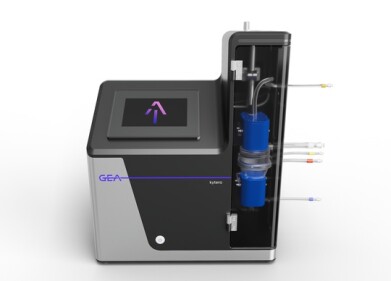Laboratory products
Who Discovered Click Chemistry?
Oct 16 2022
The Nobel Prize committee recognises a wide range of scientific achievements. Some involve complex and highly specialised techniques while others are designed to make science as easy, streamlined and user-friendly as possible. Click chemistry falls into the latter category.
“This year’s Prize in Chemistry deals with not overcomplicating matters, instead working with what is easy and simple,” explains Johan Åqvist, Chair of the Nobel Committee for Chemistry and a researcher at Uppsala University in Sweden. “Functional molecules can be built even by taking a straightforward route.”
As simple as LEGO®
Åqvist likens the framework to LEGO® building blocks, which can be easily snapped together to create larger structures. This year, American chemist K. Barry Sharpless and Danish chemist Morten Meldal were awarded the Nobel Prize in Chemistry 2022 for the development of click chemistry. Boston-born chemist Carolyn R. Bertozzi was co-recipient of the prize for her work on bioorthogonal reactions. The reactions build on the click chemistry framework and make the method suitable for use in living organisms. This opened new avenues for research in cancer treatments, drug delivery systems and pathogens in humans and animals.
Together, the trio have simplified the molecular construction process and made it easier than ever for scientists to build complex organic molecules. Using a set of highly efficient reactions, scientists can quickly ‘snap’ together molecular building blocks in the same way that children build LEGO® castles and spaceships.
A functional approach to chemistry
Function is at the heart of click chemistry, with Sharpless and Meldal receiving widespread praise for simplifying the art of molecular manipulation. The framework was first introduced to the scientific world in an article published in the German journal, Angewandte Chemie. Sharpless co-authored the paper, titled ‘Click Chemistry: Diverse Chemical Function from a Few Good Reactions’. Together with colleagues Hartmuth C. Kolb and M. G. Finn, Sharpless explains how click chemistry takes cues from nature.
“We address here the development of a set of powerful, highly reliable, and selective reactions for the rapid synthesis of useful new compounds and combinatorial libraries through heteroatom links (C-X-C), an approach we call ‘click chemistry’,” reads the paper. “Click chemistry is at once defined, enabled, and constrained by a handful of nearly perfect "spring-loaded" reactions.”
Earning ‘click’ reaction status
Earning status as a ‘click’ reaction isn’t easy. Later in the article, the authors stress reactions must meet the following criteria:
- Modular and easy to use with different molecular building blocks
- Wide in scope
- Fast, effective and generate high yields
- Must not generate toxic by-products
- Must be stereospecific
The paper describes click chemistry as a “spartan” framework but maintains that ultimately, it’s a “powerful, synthetic strategy” with huge potential. Today, click chemistry is used for a myriad of applications, including the development of cancer pharmaceuticals. Find out more about the game-changing framework and the chemists behind the methodology in our complete guide, 'What is Click Chemistry? Everything You Need to Know’.
Digital Edition
ILM 50.2 March 2025
March 2025
Chromatography Articles - Effects of small deviations in flow rate on GPC/SEC results Mass Spectrometry & Spectroscopy Articles - Waiting for the present to catch up to the future: A bette...
View all digital editions
Events
Mar 17 2025 Milan, Italy
Mar 18 2025 Beijing, China
Mar 20 2025 Brussels, Belgium
Mar 20 2025 Chandigarh, India
ACS National Meeting & Expo, Spring 2025
Mar 23 2025 San Diego, CA, USA



















